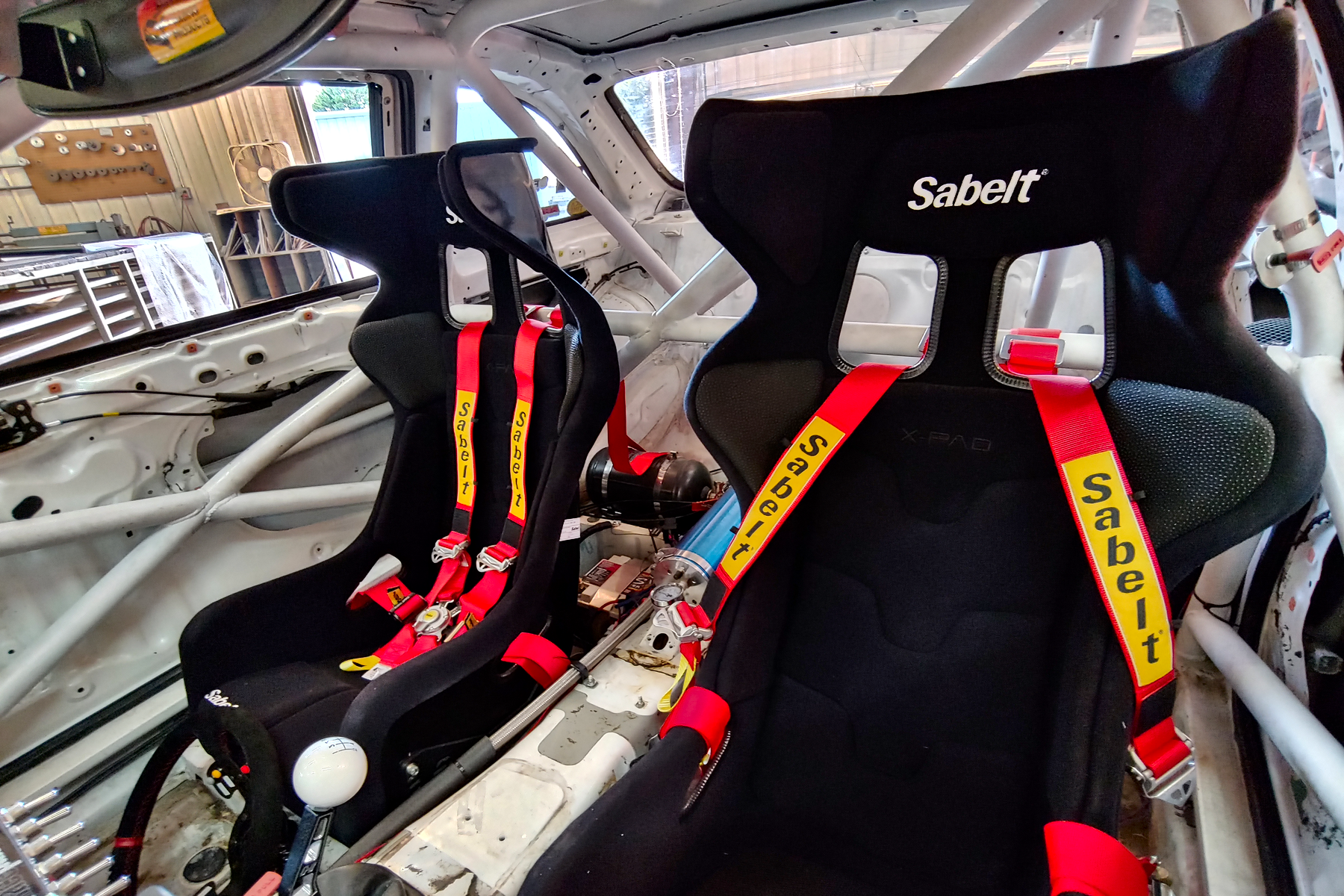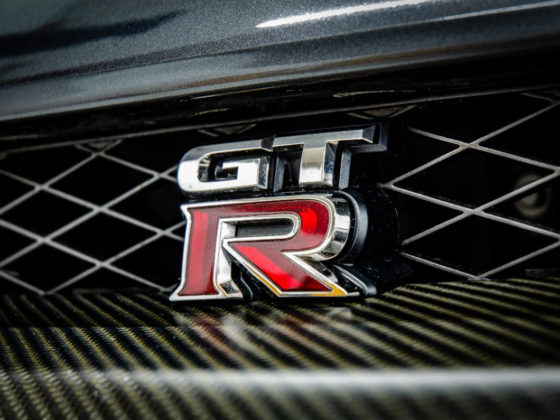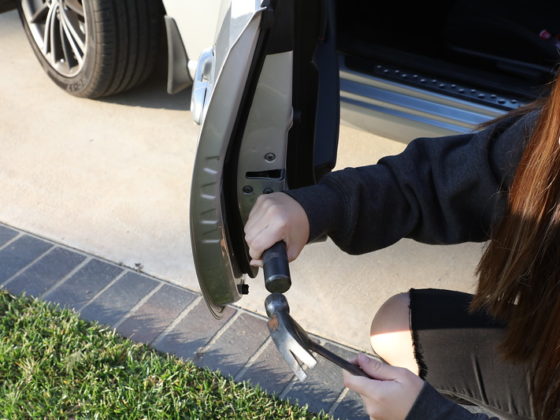
You really don’t want to weld this thing in and then have it be wrong.
There’s one last thing to attach to the frame before it is installed in the vehicle.

There is some debate on the internet about whether or not this is a good idea. Some people say that the bolts should not be welded because it adds thermal stress to them, which can make them brittle if they are cooled too quickly.
Barry has been building them like this for a really long time. No one has died yet, or even been seriously injured. While the internet rumors may be true, I’m OK with it.

The existing passenger-side seat mounting was deemed sufficient for a passenger. But I was still switching from 5- to 6-point belts, which meant more holes. Here Barry is taking Tom’s place in drilling holes in the car. Because what is a race car if not a large quantity of metal designed to have holes drilled into it?

It is vitally important not to simply place a nut underneath the eye bolt under the chassis. The metal of a vehicle floor is extremely thin. It is in no way designed to withstand the type of force that would be exerted by the nut pulling up against it from the eye bolt being pulled by the harness.
These FIA/SFI certified backing plates are designed explicitly with the purpose of going underneath the floor and securing belt mounting hardware. The Sabelt ones even have a little threaded hole so that you can prevent the assembly from rotating. Other safety companies make certified fender washers.
DO NOT INSTALL SUB BELTS IN THE FLOOR WITHOUT USING CERTIFIED SANDWICH PLATES.
Your life likely depends on it.




3 comments
As usual, a very well written article. Thanks, Erik! There is a lot of good information here and I hope that your next update IS about that well-deserved track time. I do have a question, though. At the bottom of page 2, you mention that “The factory seat brackets had been cut and channeled to accommodate flat bar which then had threaded holes installed onto which the seat mount was attached.” So, was the newly installed seat and bracket attached to the old flat bar setup? If so, why didn’t you have Robinson remove the flat bar and do a full install by not using any previously fabricated components? Not to detract from the work done (which is awesome), just a curiosity. Thanks.
@BANSFTC
Yes, if you look at the last picture on page 2, those are the “original” mounts that were fabricated by the cage builder (different shop). It’s basically flat bar fabbed into the OEM seat mounts. On the middle of page 6 you can see that Barry ground the paint away to expose bare metal, and then welded his new square frame directly to the flat bar that was already there. So, the OEM seat mounts have flat bar welded to them, and then a square frame welded to that.
Barry felt that the existing flat pieces were welded well enough into the chassis that they would be a suitable mounting point for the new frame. It would’ve been extra hours to chop all that stuff out.
The other thing is that the OEM mounts are usually (!) safe enough for rollover and serious crashes in terms of being welded into the car. So, using them as a starting point can sometimes be easier because they are often flat in relation to a floor that is far from flat.
If I was starting over from a bare tub today, Barry probably would’ve opted to make two bars going from the side rail to the tunnel all nice and welded in and then build the seat frame on top of that, but that’s quite a bit of extra work. You can see from the picture on the middle of page 6 that the floor of the driver side is not flat. So to make it work you end up having to start cutting things out of the floor pan and that gets ugly quick.
I hope that clears it up!
Fat-fingered my own name. I miss the previous motoiq.com format where we would log in.
Yes, your reply does clear it up. I was thinking about the cross bars that you mentioned (side rail to tunnel), but your explanation makes it clear why it was done with the existing flat stock. Thanks for clarifying. Keep these articles coming! They’re great.